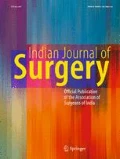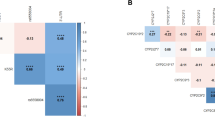Abstract
Heme oxygenase-1 has been identified to protect allograft from ischemia/reperfusion and immunologic rejection. Activity of heme oxygenase-1 is regulated by a guanine-thymine dinucleotide length polymorphism in the heme oxygenase-1 gene promoter. In this study, we aimed to explore the impact of the heme oxygenase-1 gene promoter polymorphism of donors and recipients on the orthotopic liver graft function after transplantation. Sixty recipients and their accompanying donors of orthotopic liver allografts were included retrospectively in this study. Heme oxygenase-1 gene promoter polymorphism was assessed using genomic DNA isolated from cryopreserved splenocytes or peripheral blood mononuclear cells and analyzed by genetic analyzer. Small allele of the donor heme oxygenase-1 gene polymorphism significantly prolonged the graft survival (p = 0.017). Recipients of allografts from a class of small-allele carrier had significantly lower serum total bilirubin compared with recipients of a nonclass small-allele donor liver (p < 0.01). Additionally, in recipients of small-carrier allografts, cold ischemia time (<10 h or ≥10 h) did not affect the total bilirubin significantly. Our study suggested a protective function of donor-derived heme oxygenase-1 gene promoter polymorphism on orthotopic liver allograft function after transplantation.



Similar content being viewed by others
References
Maines MD (1988) Heme oxygenase: function, multiplicity, regulatory mechanisms and clinical application. FASEB J 2(10):2557–2568
Otterbein LE, Choi AM (2000) Heme oxygenase: colors of defense against cellular stress. Am J Physiol Lung Cell Mol Physiol 279(6):L1029–L1037
Soares MP, Lin Y, Anrather J et al (1998) Expression of heme oxygenase-1 can determine cardiac xenograft survival. Nat Med 4(9):1073–1077
Amersi F, Shen XD, Anselmo D et al (2002) Ex vivo exposure to carbon monoxide prevents hepatic ischemia/reperfusion injury through p38 MAP kinase pathway. Hepatology 35(4):815–823
Katori M, Buelow R, Ke B et al (2002) Heme oxygenase-1 overexpression protects rat hearts from cold ischemia/reperfusion injury via an antiapoptotic pathway. Transplantation 73(2):287–292
Chen X, Zhang ZY, Zhou GW et al (2010) Protective effect of heme oxygenase-1 to pancreas islet xenograft. J Surg Res 164(2):336–343
Yamada N, Yamaya M, Okinaga S et al (2000) Microsatellite polymorphism in the heme oxygenase-1 gene promoter is associated with susceptibility to emphysema. Am J Hum Genet 66(1):187–195
Hirai H, Kubo H, Yamaya M et al (2003) Microsatellite polymorphism in heme oxygenase-1 gene promoter is associated with susceptibility to oxidant-induced apoptosis in lymphoblastoid cell lines. Blood 102(5):1619–1621
Schillinger M, Exner M, Mlekusch W et al (2002) Heme oxygenase-1 genotype is a vascular anti-inflammatory factor following balloon angioplasty. J Endovasc Ther 9(4):385–394
Chen YH, Lin SJ, Lin MW et al (2002) Microsatellite polymorphism in promoter of heme oxygenase-1 gene is associated with susceptibility to coronary artery disease in type 2 diabetic patients. Hum Genet 111(1):1–8
Exner M, Schillinger M, Minar E et al (2001) Heme oxygenase-1 gene promoter microsatellite polymorphism is associated with restenosis after percutaneous transluminal angioplasty. J Endovasc Ther 8(5):433–440
Stocker R, Yamamoto Y, Ames BN et al (1987) Bilirubin is an antioxidant of possible physiologic importance. Science 235(4792):1043–1046
Willis D, Moore AR, Willoughby DA et al (1996) Heme oxygenase: a novel target for the modulation of the inflammatory response. Nat Med 2(1):87–90
Brouard S, Berberat PO, Soares MP et al (2002) Heme oxygenase-1-derived carbon monoxide requires the activation of transcription factor NF-kappa B to protect endothelial cells from tumor necrosis factor-alpha mediated apoptosis. J Biol Chem 277(20):17950–17961
Lee TS, Chau LY (2002) Heme oxygenase-1 mediates the anti-inflammatory effect of interleukin-10 in mice. Nat Med 8(3):240–246
Otterbein LE, Bach FH, Alam J et al (2000) Carbon monoxide has anti-inflammatory effects involving the mitogen-activated protein kinase pathway. Nat Med 6(4):422–428
VanUffelen BE, de Koster BM, Elferink JG et al (1996) Carbon monoxide enhances human neutrophil migration in a cyclic GMP-dependent way. Biochem Biophys Res Commun 226(1):21–26
Ishikawa K, Navab M, Lusis AJ et al (1997) Induction of heme oxygenase-1 inhibits monocyte transmigration induced by mildly oxidized LDL. J Clin Invest 100(5):1209–1216
Arriaga SM, Mottino AD, Almara AM et al (1999) Inhibitory effect of bilirubin on complement-mediated hemolysis. Biochim Biophys Acta 1473(2–3):329–336
Araujo JA, Meng L, Tward AD et al (2003) Systemic rather than local heme oxygenase-1 overexpression improves cardiac allograft outcomes in a new transgenic mouse. J Immunol 171(3):1572–1580
Grant Information
This work was supported by grants from the National Natural Science Foundations of China (81170721), Shanghai Pujiang Program (14PJ1407300), and Medical Guiding Project of Shanghai Municipal Science and Education Commission (14411960700).
Ethics Committee Approval
This study protocol conforms to the ethical guidelines of the 1975 Declaration of Helsinki as reflected in a prior approval by the institution’s human research committee of Shanghai Jiao Tong University, and informed consent was obtained from each patient included in the study.
Conflict of Interest
The authors declare that they have no competing interests.
Author information
Authors and Affiliations
Corresponding author
Additional information
Zheng-Yun Zhang and Jiao Guan contributed equally to this work.
Rights and permissions
About this article
Cite this article
Zhang, ZY., Guan, J., Li, H. et al. Heme Oxygenase-1 Promoter Polymorphism Protects Liver Allograft. Indian J Surg 78, 14–19 (2016). https://doi.org/10.1007/s12262-015-1309-5
Received:
Accepted:
Published:
Issue Date:
DOI: https://doi.org/10.1007/s12262-015-1309-5




